The world of manufacturing is experiencing a seismic shift, driven by technological advancements that are reshaping how goods are produced, distributed, and consumed. This new era, often referred to as industry 4.0, is characterized by the integration of digital technologies into every aspect of the manufacturing process, blurring the lines between the physical and digital worlds. It’s no longer a futuristic concept but a present-day reality, offering unprecedented opportunities for businesses to improve efficiency, reduce costs, and gain a competitive edge. Imagine factories where machines communicate with each other, predict potential failures, and adapt to changing demands in real-time. This is the promise of industry 4.0, and it’s rapidly becoming the new normal.
Key Takeaways:
- Industry 4.0 is revolutionizing manufacturing through the integration of digital technologies.
- It enables smarter factories with improved efficiency, predictive maintenance, and real-time adaptability.
- Core technologies like IoT, AI, and cloud computing are the driving forces behind this industrial revolution.
- Businesses adopting industry 4.0 stand to gain a significant competitive advantage.
How Does Industry 4.0 Optimize Production Processes?
One of the most significant impacts of industry 4.0 is the optimization of production processes. Traditional manufacturing often involves rigid, pre-defined workflows, making it difficult to adapt to changing market demands or unexpected disruptions. Industry 4.0, however, introduces flexibility and agility through technologies like the Internet of Things (IoT), which connects machines, sensors, and other devices, allowing them to exchange data and coordinate their actions.
For example, imagine a bottling plant that uses IoT sensors to monitor the performance of its filling machines. These sensors collect data on everything from the speed and temperature of the filling process to the amount of liquid being dispensed. This data is then analyzed using AI algorithms to identify potential bottlenecks or inefficiencies. If the AI detects that one of the machines is starting to slow down, it can automatically adjust the speed of the other machines in the line to compensate, preventing any loss of productivity. In some scenarios, predictive maintenance can be triggered, scheduling the machine for maintenance before a full breakdown occurs. This proactive approach minimizes downtime and ensures that the production line is running at optimal efficiency. Imagine the increase of bandwidth using 5G technology to process a large amount of gb.
What Role Does Automation Play in Industry 4.0?
Automation has always been a part of manufacturing, but industry 4.0 takes it to a whole new level. Traditional automation typically involves simple, repetitive tasks performed by robots or other machines. In industry 4.0, automation is much more sophisticated, driven by AI and machine learning. This allows machines to perform more complex tasks, adapt to changing conditions, and even learn from their mistakes.
Consider a welding robot on a car assembly line. In a traditional setup, the robot would be programmed to perform a specific sequence of welds on a particular model of car. If the model changed, the robot would need to be reprogrammed, which could take hours or even days. With industry 4.0, the welding robot can be equipped with sensors and AI algorithms that allow it to recognize different models of cars and adjust its welding parameters accordingly. It can also learn from its own performance, identifying areas where it can improve its welding technique. This level of automation significantly reduces the need for human intervention and increases the speed and accuracy of the welding process.
How Does Data Analytics Contribute to Industry 4.0?
Data is the lifeblood of industry 4.0. The vast amounts of data generated by connected devices and machines are analyzed to gain insights into every aspect of the manufacturing process. This data can be used to optimize production schedules, identify potential problems, improve product quality, and even develop new products and services.
For instance, a textile manufacturer might use data analytics to track the performance of its weaving machines. By analyzing data on the speed, tension, and vibration of the machines, the manufacturer can identify patterns that indicate potential problems, such as a broken thread or a malfunctioning sensor. This allows them to take corrective action before the problem leads to a major disruption in production. Data from customer feedback also plays a crucial role. By analyzing customer reviews and social media posts, manufacturers can gain insights into customer preferences and identify areas where they can improve their products or services.
What are the Key Technologies Driving Industry 4.0?
Several key technologies are driving the industry 4.0 revolution. These technologies work together to create a connected, intelligent, and automated manufacturing environment. Some of the most important include:
- Internet of Things (IoT): Connects machines, sensors, and other devices, enabling them to exchange data.
- Cloud Computing: Provides the infrastructure and platform for storing and processing the vast amounts of data generated by connected devices.
- Artificial Intelligence (AI) and Machine Learning: Enables machines to learn from data, make decisions, and automate complex tasks.
- Big Data Analytics: Provides the tools and techniques for analyzing large datasets to identify trends and insights.
- Cybersecurity: Protects sensitive data and systems from cyber threats.
- Additive Manufacturing (3D Printing): Enables the creation of complex parts and prototypes on demand.
- Augmented Reality (AR) and Virtual Reality (VR): Provide immersive experiences that can be used for training, design, and maintenance.
By embracing these technologies, manufacturers can unlock new levels of efficiency, productivity, and innovation, setting the stage for a future where manufacturing is smarter, more sustainable, and more responsive to customer needs.







